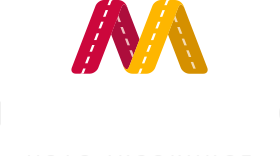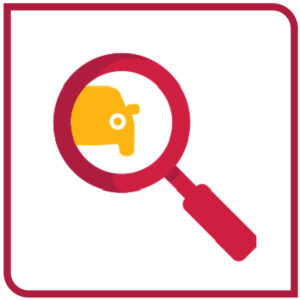Insurance fraud affects anyone who has an insurance policy. According to The Coalition Against Insurance Fraud, “Insurance fraud is one of America’s largest crimes — at least $80 billion is stolen each year.” The Coalition estimates that the average household pays around $1,000 extra in insurance premiums each year to make up for the cost of insurance fraud.
According to the National Association of Insurance Commissioners (NAIC), auto insurance is widely believed to be affected by fraud more than any other type of insurance. A study completed by Versik, a data and analytics company, states that fraud costs the auto insurance industry at least $29 billion a year. The Insurance Research Council (IRC) completed a study in which they estimated that between $5.6 billion and $7.7 billion was fraudulently added to paid claims for auto insurance bodily injury payments in 2012, compared with a range of $4.3 billion to $5.8 billion in 2002.
Maryland is one of the areas most impacted by insurance fraud. A 2021 study completed by Clearsurance using data from the Federal Trade Commission (FTC) found that Maryland ranks sixth in the United States for the most vehicle fraud and scams. According to the study, “Maryland has 313 auto-related cases per one million Maryland residents.” The article also states that Maryland has 1,893 annual auto fraud cases, and those are only the fraud cases that were discovered.
There are two primary categories of auto insurance fraud: “hard fraud” and “soft fraud.” Hard fraud involves a policyholder deliberately causing damages with the intent to collect on the other driver’s insurance policy. Soft fraud involves a policyholder exaggerating a claim, intentionally omits, or lies about the information on the application for a lower premium payment. Soft fraud is the most common type of insurance fraud and is even seen as a crime of opportunity, which is a crime that is committed when a perpetrator sees that there is the chance to commit an act as opposed to planning the crime ahead of time.
Examples of Auto Insurance Fraud Tactics:
- Arson for Profit – The covered vehicle is intentionally set on fire by the policyholder or someone acting on their behalf to collect insurance money.
- Exaggerated Claims – Those involved in a legitimate accident inflate their injuries or damage to a vehicle to collect extra money.
- Drive-Down – A driver waves on another driver to proceed then intentionally hits the passing car.
- Hit & Run – The policyholder uses a pre-damaged vehicle and claims it was involved in a hit-and-run.
- Sideswipe – A driver in the inside lane of a dual turn lane drifts into the outer lane, intentionally forcing a collision.
- Swoop & Squat – This is a coordinated scheme where two vehicles work in tandem to cause an accident with a third vehicle. One of the fraud vehicles makes an abrupt lane change (“swoop”) in front of the second fraud vehicle, causing it to brake suddenly, or “squat.” As a result, the insured vehicle cannot avoid a collision with the “squat” car’s rear end. The front “swoop” car typically never will be seen again. The “squat” car driver will submit a claim against the third driver’s insurance for their vehicle damage and bodily injuries.
- Jump In – When individuals who were not occupants in any of the vehicles involved in an accident claim that they were occupants of one of the vehicles and were injured in the incident.
- Falsifying an Accident Date or Accident Circumstances – This covers several types of fraudulent activity related to providing false information related to a claim. Individuals may falsify an accident date so that it appears an incident occurred at a time when policy coverage was in force. If an excluded driver was operating a vehicle during an accident, the claim may be submitted showing a different covered driver operating the vehicle in an attempt to get the insurer to cover damages.
- Rate Evasion – When false residential information is intentionally provided on an insurance application in order to receive a lower premium rate.
Those caught committing insurance fraud face the consequences of jail time, criminal prosecution, penalties and fines, and/or a civil fraud penalty and restitution.
How Maryland Auto is Combating Fraud
Maryland Auto takes insurance fraud seriously and takes measures to prevent paying fraudulent claims.
Our IT systems have been enhanced to detect and flag potential fraudulent claim indicators. Alerts are placed on claims to make claims employees and management aware when there is a potential of fraud to prevent accidental payments being made on fraudulent claims.
Maryland law limits eligibility for coverage with Maryland Auto to Maryland residents only. Often, residents of other states where rates may be higher falsify their residence information to apply for and purchase Maryland Auto policies. Maryland Auto relies on a network of Vehicle Tag Locators to investigate claims where residency may be an issue in order detect if a vehicle is primarily operated in Maryland or out of the state.
Our Claims professionals receive regular training to sharpen their skills to keep them aware of any claim situations that may indicate fraud. In addition, training is offered to our authorized producer partners (agents) to raise awareness of ways to identify and prevent fraud before a policy is written or a claim is submitted. We also have a dedicated Special Investigative Unit responsible to further investigate and resolve those suspicious claims that have been identified with potential fraudulent claim indicators.
How to Report Insurance Fraud
- Contact the Insurance Carrier – Reach out to the insurer who you think is being defrauded.
- Maryland Auto can be reached by phone at 800-492-7120
- Maryland Insurance Administration’s Insurance Fraud Division
- Call 1-800-846-4069
- Complete this form and fax to 410-347-5350 or email to mia@maryland.gov.
- National Insurance Crime Bureau (NICB)
- Call 1-800-835-6422
- Federal Bureau of Investigation (FBI)
- (410) 265-8080
For more information about insurance fraud:
- Insurance Information Institute (III)
- Maryland Insurance Administration (MIA)
- Federal Investigation Bureau (FBI)




